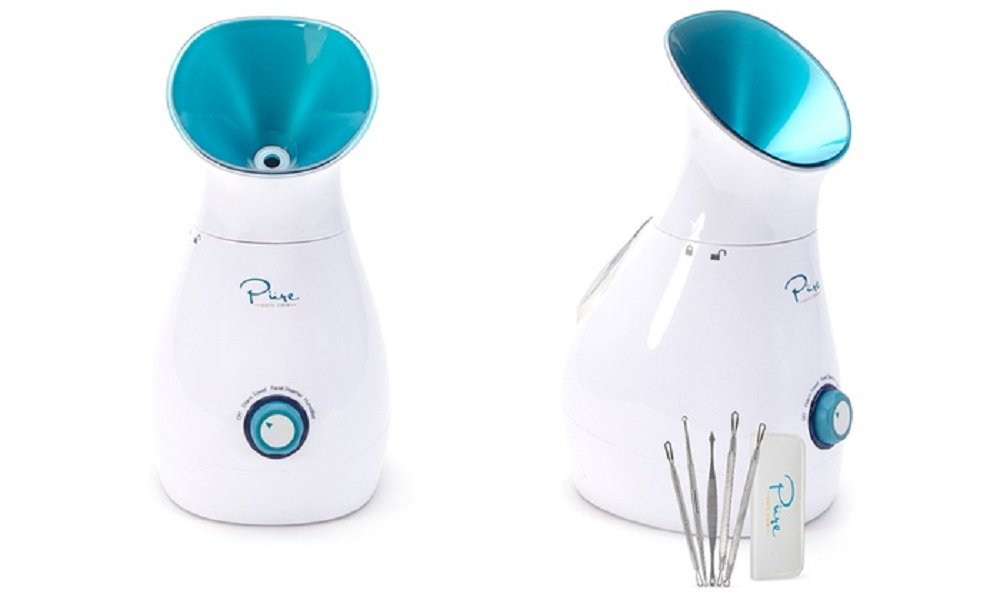Atomizers have gained substantially in popularity over the last few years, though not in the way you might expect. Because these ingenious devices are used in vaping, and numerous other devices, as well as home humidity, control the technology has advanced by leaps and bounds. That’s a significant advantage for people who want to keep their indoor air moist. Like nebulizers, atomizers are cutting edge vapor creating tech. So how do you get the most out of an atomizer? It’s essential to choose high-quality products to use in your home. What you save initially buying a knockoff, you’ll pay ten times over in replacements. Fortunately, with the increase in popularity, there’s a wealth of information, making it easier to know which atomizers produce the most vapor. I’ll show you what matters so you know how to choose the correct atomizer for your home. Plus, I’ll explain how they work.
Which atomizer produces the most vapor? Atomizers with two or more large coils and an abundant power source produce the most vapor. Additionally, you want a large tank reservoir for water. In this case, bigger certainly means more because there’s more surface area creating the mist. You’ll have to look at the technical specifications to see how your atomizer stacks up.
Choosing a High Output Atomizer
Controlling household humidity can help with allergies, breathing, nosebleeds, and more, so how do you choose one that will provide the most vapor? There are four parts of an electronic atomizer that affect how much steam you will get. While non-electric atomizers also exist, they offer less mist, and I’ll explain them briefly later.
- The Wick- Exactly as the name implies, an atomizer wick draws water from the reservoir for heating. Without this vital and simple part, the hearing coils couldn’t do an efficient job of making that vapor. Make sure you clean and replace your wick as often as necessary to prevent any bacterial or mold growth.
- The Heating Coils- We all know that water, plus heat equals steam, aka vapor. Naturally, the conductive coils inside an atomizer are what turn the water into a gas so you can inhale it. Ideally, you want two or more heating coils. More coils mean more heat. So long as the wick and water ratio versus temperature provided match up, you’ll get a constant stream of vapor coming out.
- The Power Source- All the water and coils in the world won’t make vapor if the power isn’t present. Batteries and cords provide everything a simple coil-and-wick system needs to create a mist. So long as your coils aren’t over-powered, then they will conduct and radiate heat as long as your power holds out. Hence, a plug-in is almost always going to produce more vapor over time.
- The Tank or Reservoir- You need a place to put the water. A more extensive reservoir means your water lasts longer. The wick draws at a reasonably constant rate, so it should be simple, over time, to determine when your tank will run dry. It’s important not to run your atomizer without liquid inside. Regrettably, you can burn out your device or even start a fire by running on empty.
Side Effects of Household Atomizers
Because atomizers increase the humidity in your home, it’s essential to understand the effect this has on your immediate environment. In humid climates, these effects are heightened because of the naturally occurring moisture. Too much humidity can become problematic. Choose a personal atomizer to minimize the effect on your home.
Treat yourself to a spa-like experience at home with a Pure Daily Care Nano Ionic Face Facial Steamer. Prevent signs of aging, and moisturize your skin with this professional device. Plus this high output atomizer helps with better circulation and cell regeneration. To get your updated model on Amazon, click here.
The Positive
Moist air helps to prevent indoor allergens, clear skin, better breathing and so much more. Additionally, humidity reduces the likelihood of nosebleeds and can soothe irritated air passages. Indoor humidity between forty and fifty percent is ideal.
Some atomizers are even used as nebulizers to help introduce medicine to those who cannot otherwise inhale medication properly. Nebulizing atomizers can also function as a personal essential oil inhaler. However, I strongly recommend talking to a doctor or aromatherapy specialist before choosing your oils.
Finally, a diffuser atomizer used for essential oils can provide a pleasant aroma and additional health benefits. Some essential oils reduce anxiety, help with better sleep, or offer you more focus. Rosemary, in particular, can also increase memory.
The Negative
Dust mites, a significant source of asthma and allergy issues, thrive in moist environments. Moreover, bacteria and mold also require moisture. Thus overusing an atomizer can increase the toxicity of our indoor air.
It’s essential to clean your atomizer with a three percent solution of hydrogen peroxide every one to three days. Stagnant water in a turned-off atomizer is a perfect breeding ground for mold and bacteria, not to mention mosquitoes. Furthermore, your device helps to spread these problems around.
How Do Atomizers Work
When you turn on an atomizer, the power source begins to heat the coils inside, which determines how much vapor you will have as a result. A good atomizer will help you keep your skin looking bright and beautiful if it produces enough steam. More power and larger coils will give you more mist and often works more quickly.
Atomizers run off of either batteries or a power cord. For more vapor, opt for a plug-in model as it will likely draw substantially more power. That translates pretty directly into more moisture for your home, so skip anything with double-As.
In addition to your heating coils, there’s a wick inside your atomizer. Just as a candle wick draws wax and a lamp wick draws combustible fluid, your atomizer wick draws water. By putting that water near a heat source (the coils), it warms the water. Eventually, it reaches 212°F or higher, and the water becomes steam.
By perpetuating the wick, water, heat, steam process, your atomizer will produce vapor until it runs out of the water to evaporate. Look for atomizers that have a low-water automatic shutoff. By choosing a product that turns itself off, you can avoid the need to replace burnt-out atomizers. Moreover, it’s not as much of a fire hazard if you accidentally leave it on.
Using an Atomizer
In addition to creating humidity around the home, atomizers come in two vital styles for health and beauty. Sometimes called nebulizers, you might be more familiar with an atomizer for facial moisturizing and eyelash extensions. By spraying a very fine mist on your skin, or false eyelashes, you can hydrate skin and more, leaving it pliant and soft.
You have doubtless seen an atomizer used for pore cleansing. This style often looks more like a traditional nebulizer. Using a mask shape to cover more surface area is a brilliant trick. Using cool or warm steam to relax your pores will help remove blemishes and soften stubborn blackheads.
For gorgeous, clear skin the Nano Ionic Facial Steamer from Amazon is a superb, high output choice. With all the parts you need to handle blackheads and other skin issues, you’ll love this atomizer. Plus a one year warranty backs this fantastic atomizer. Find out more when you click here.
Secondly, personal nebulizing atomizers are excellent for better breathing. Even those without asthma and allergies end up with dry lips, scratchy throats, and other moisture-related breathing issues. Especially in winter, a personal atomizer can help you breathe better.
The Mayluck Handheld Mesh Atomizer Nebulizer puts out plenty of perfect moist air. Additionally, it has a low water sensor, and it’s low noise. Best of all, this atomizer has a self-cleaning function to cut down on maintenance time. See the Amazon ratings for yourself when you click here.
Atomizers used for vaping produce these clouds of vape juice using the same mechanism. However, you’d have to be a real DIY sorceress to turn that style into something useful and safe for humidity around the house. Don’t be fooled by the many forms and uses for atomizers.
Additionally, you could find a water feature atomizer. While these work on the same principle, creating a fine mist, they aren’t usually meant for household humidity control or your beauty regimen. Any product that uses this coil and wick system to make a fog-like cloud share the same name, but not all of them give you the desired results.
Unless you are looking to build a fish pond, rocker, or water fountain for your yard or living room, then you probably don’t want the last option. Make sure you read the specifications.
The Difference Between Atomizers & Nebulizers
You will see the terms atomizer and nebulizer used interchangeably, but which one produces more vapor? Strangely enough, the nebulizer could produce more mist, though they don’t always. The secret is in the difference.
A nebulizer, just like an atomizer, uses heated coils and a wick to produce vapor. In that sense, they are precisely the same thing merely called by different names. However, a traditional nebulizer doesn’t allow for a specific dosage. In short, an atomizer is a controlled-dose nebulizer.
To confuse things further, in a medical or beauty device (called a nebulizer), an atomizer is often the source of the vapor. An atomizer is a name given to the mechanism inside a vape or e-cigarette, the mist producer on a decorative water feature, a home humidifying device, and the power inside some nebulizers.
Once you know that secret, it’s much easier to find the information you need for the atomizer you need. Add more keywords to narrow your results when searching. For example, instead of ‘atomizer’ type ‘high output atomizer nebulizer,’ or ‘atomizer diffuser.’
By indicting the style, even using incorrect terms like ‘diffuser,’ your search engines will know what you’re seeking the next time you wish to upgrade. Plus, there’s a lot of confusion about terminology. Merchants can name and tag a product any way they want and often mislabel to find the right audience.
Non-Electric Atomizers
The term atomizer also refers to any system that turns liquid into a spray. Hence your perfume, hairspray, and even a regular squirt bottle can be called atomizers. This umbrella term is used for so many different devices it can be challenging to narrow down what you’re seeking.
Ultimately, as it relates to getting the most vapor, electric atomizers are vastly more effective than manual types. Still, it’s noteworthy that this name is used for just about anything that makes a mist.
Final Thoughts
Picking the right high volume atomizer doesn’t need to be complicated. You simply need to inquire about the coil size and power going to your unit. All manufacturers can provide this data, and most will do so if asked. Avoid any company that’s not transparent about its machinery.
You want to find large, multiple coils. By using more surface area, the atomizer puts off more heat evenly along the length of the wick. Naturally, this creates more mist very quickly. Thus, you get the most vapor possible.
Remember to ask about the power source as well. All the coils in the world won’t make enough vapor if they aren’t heating up properly.

